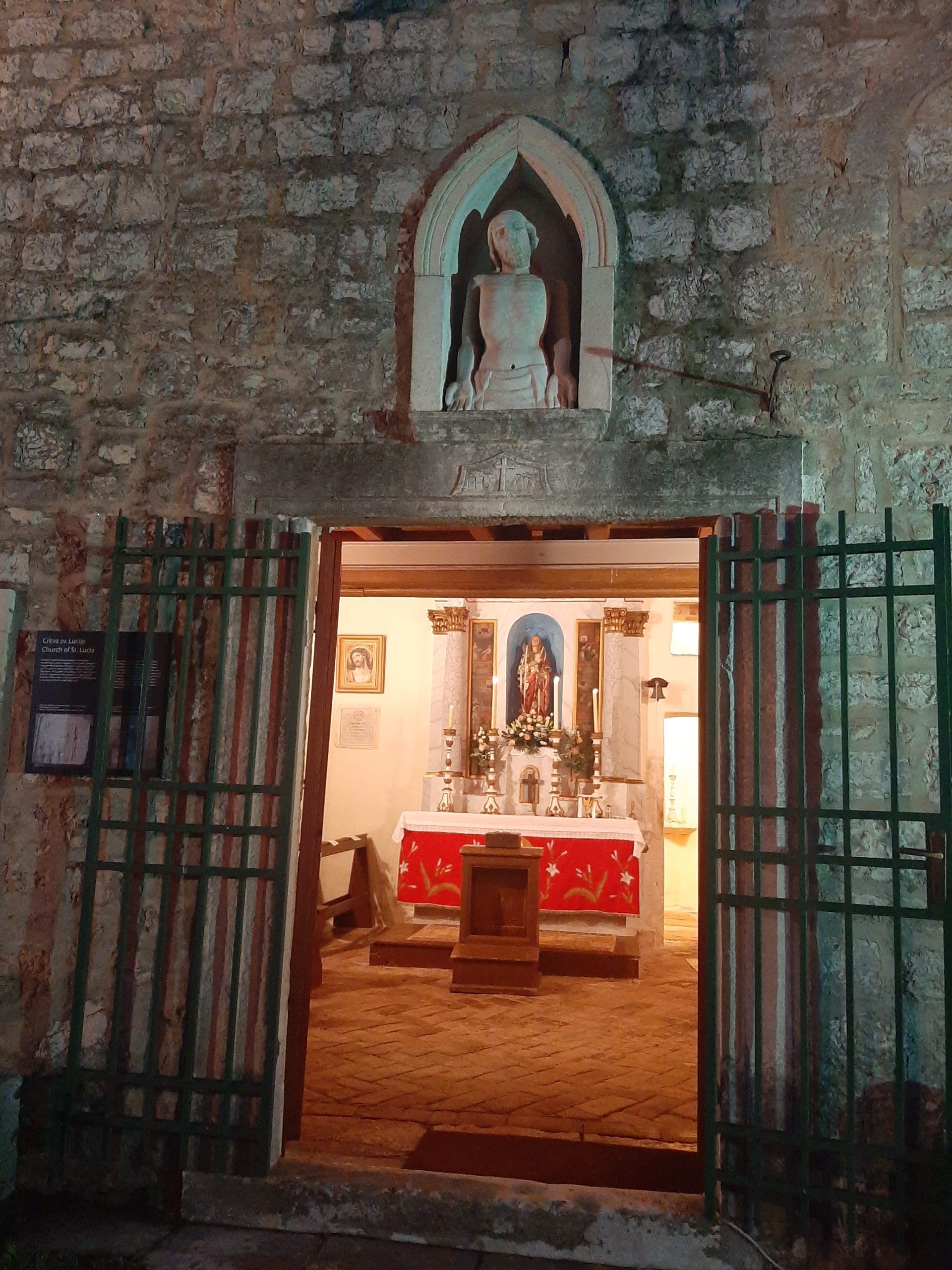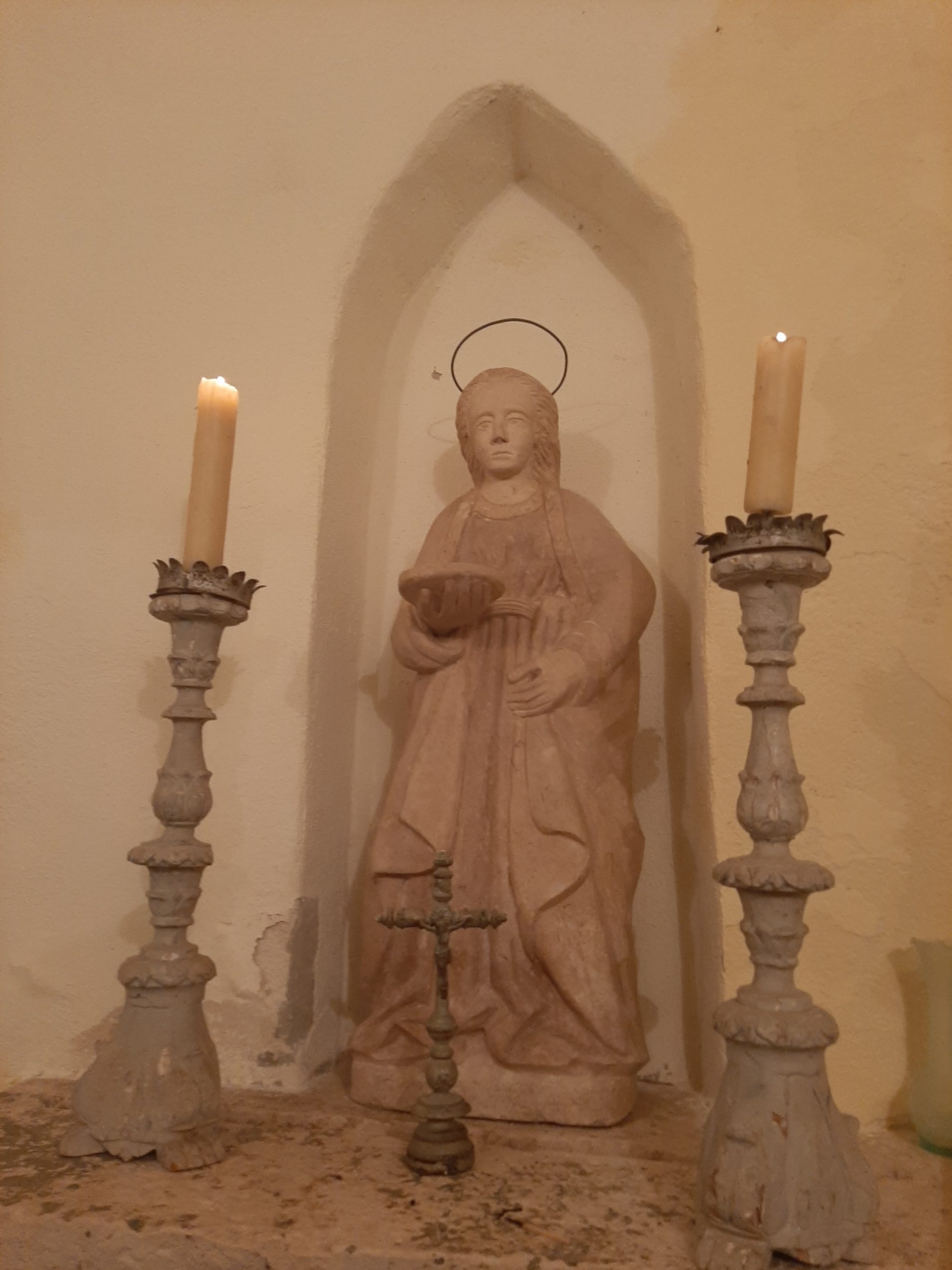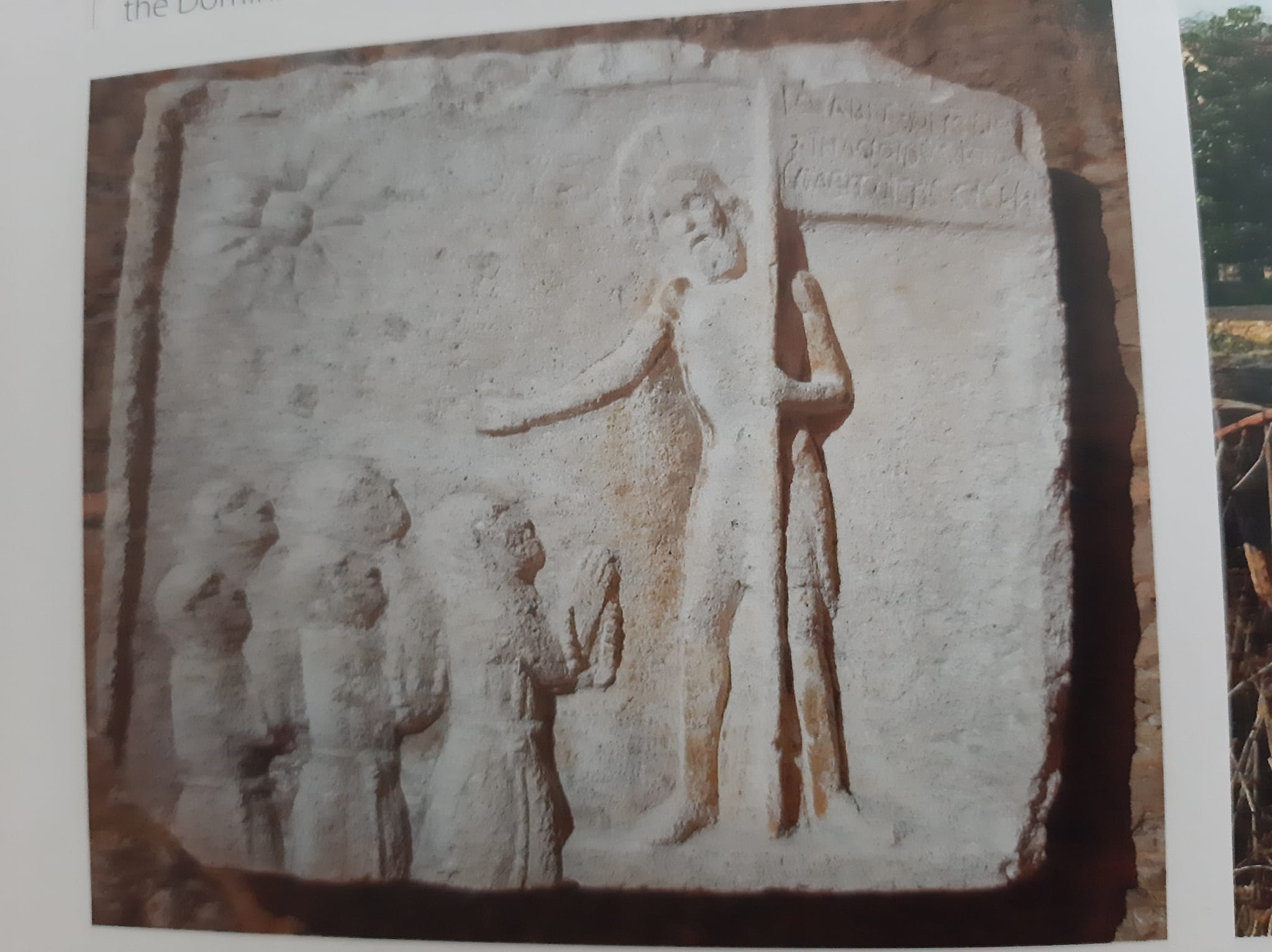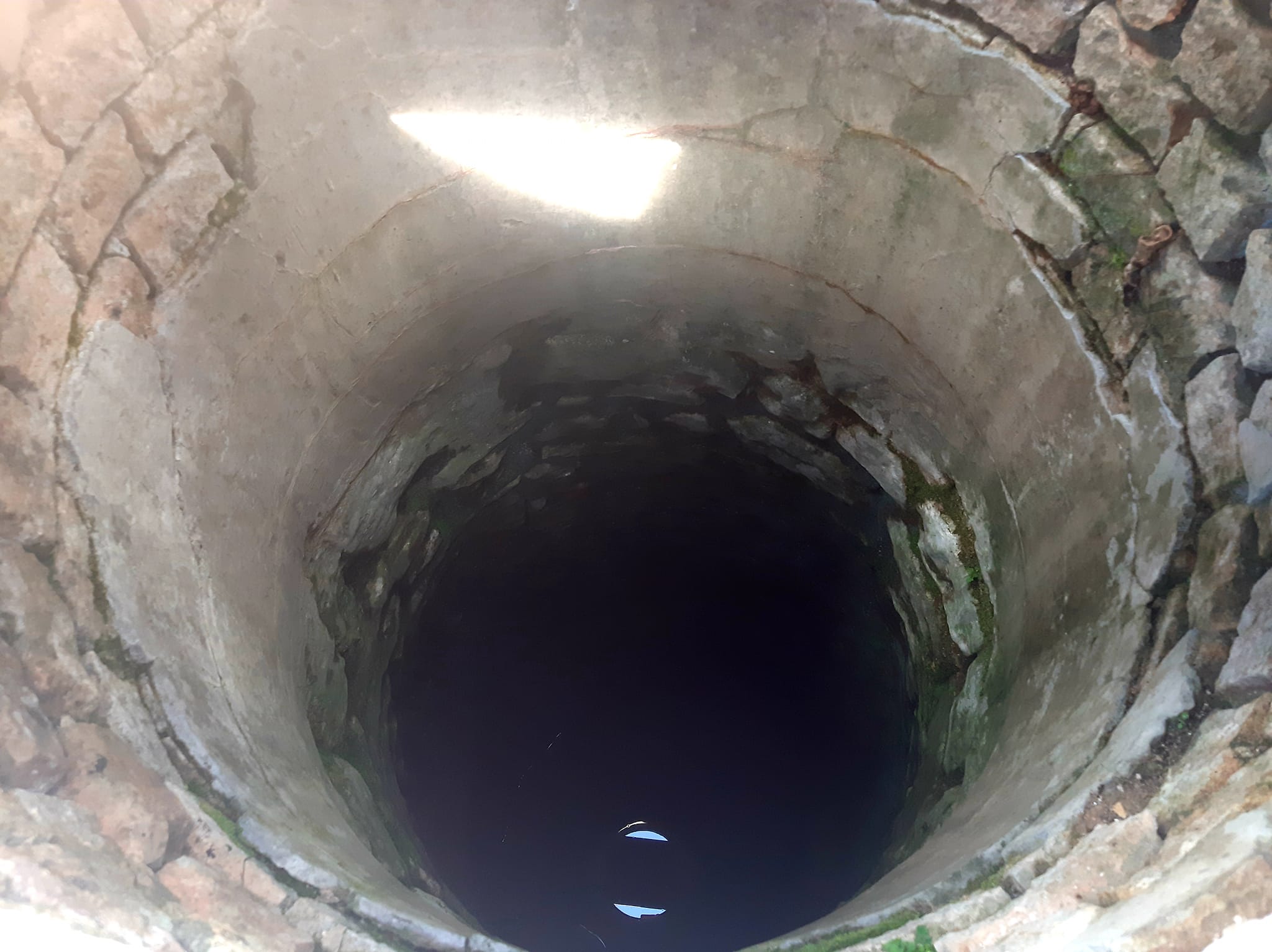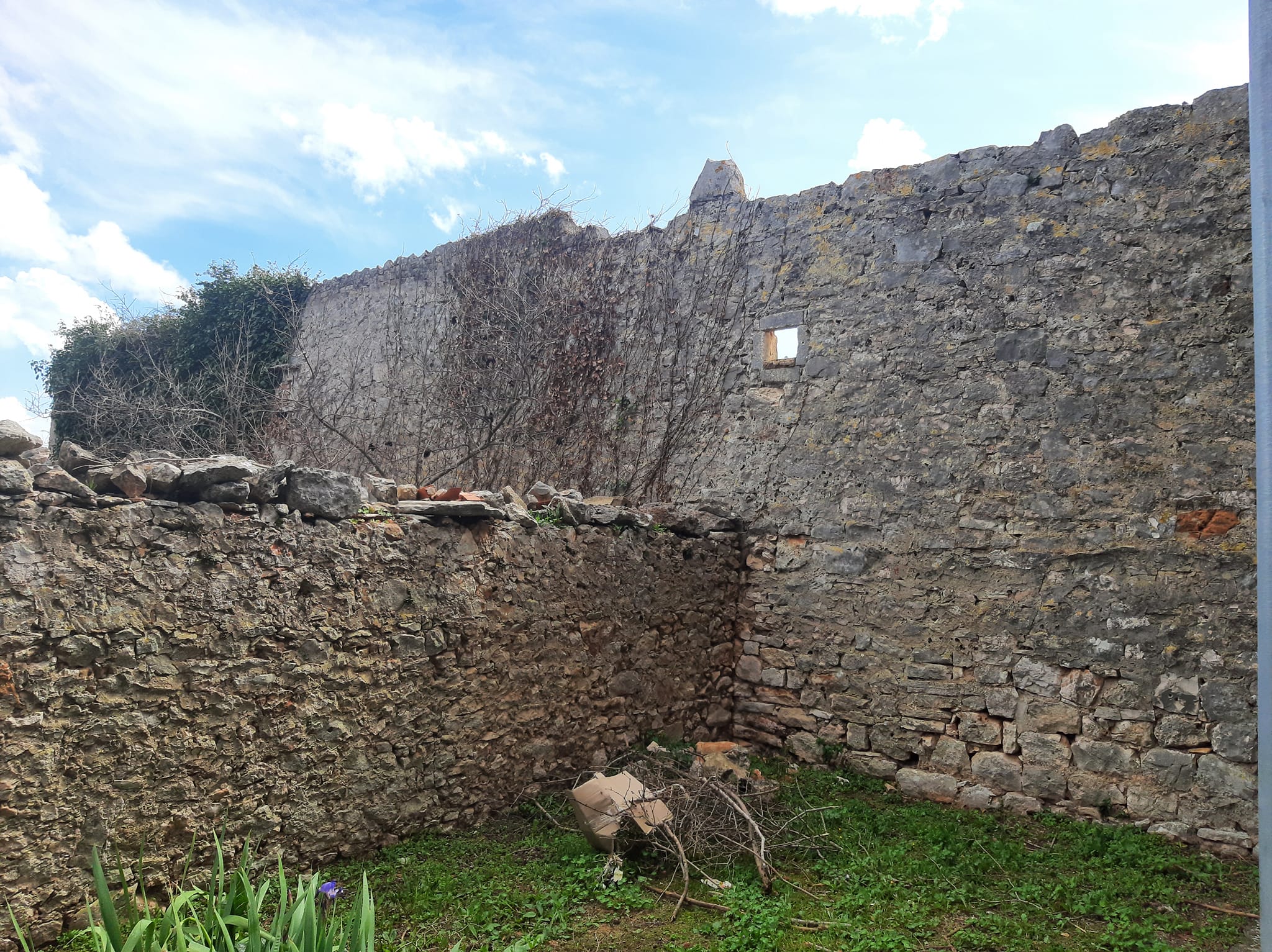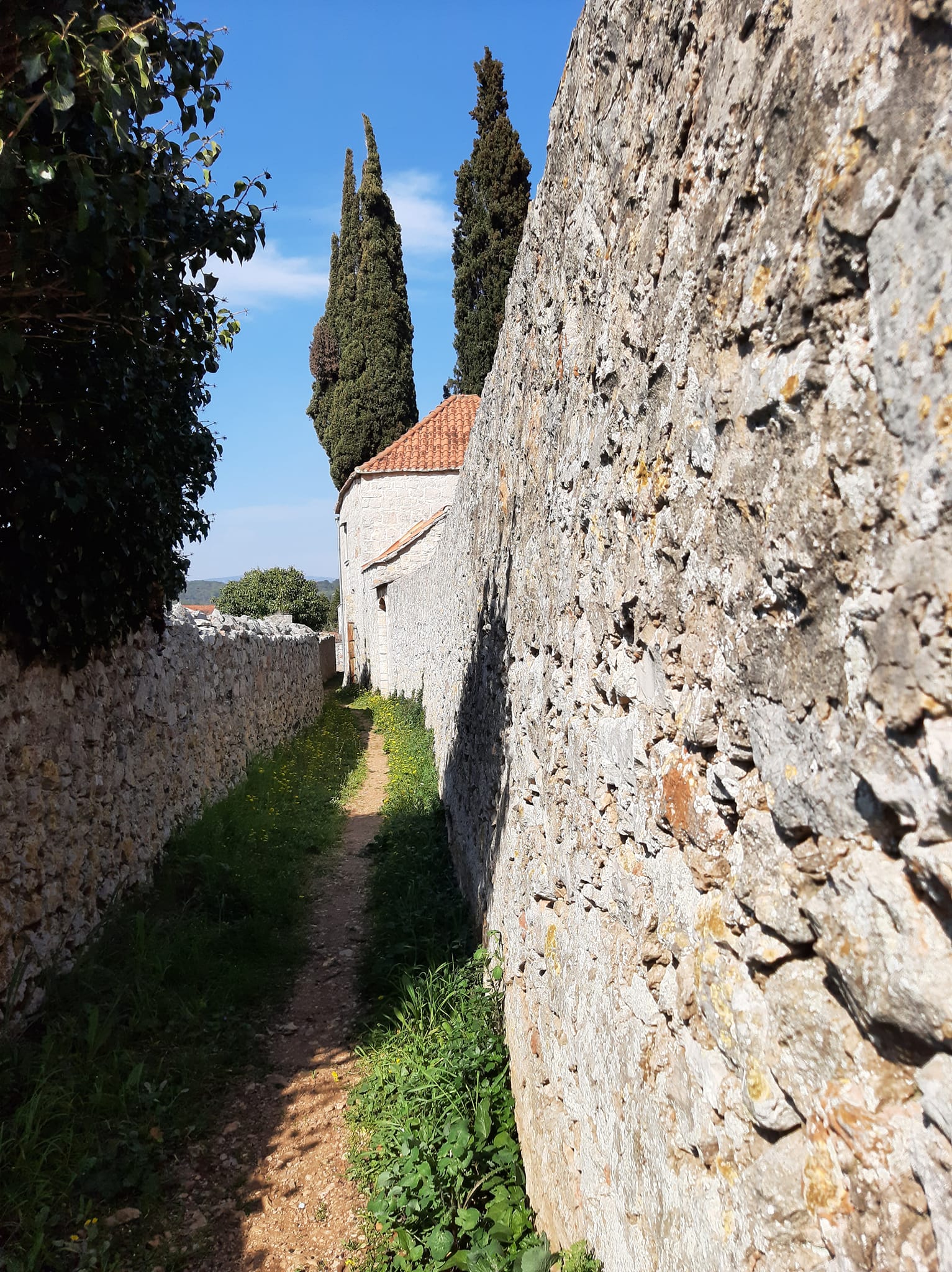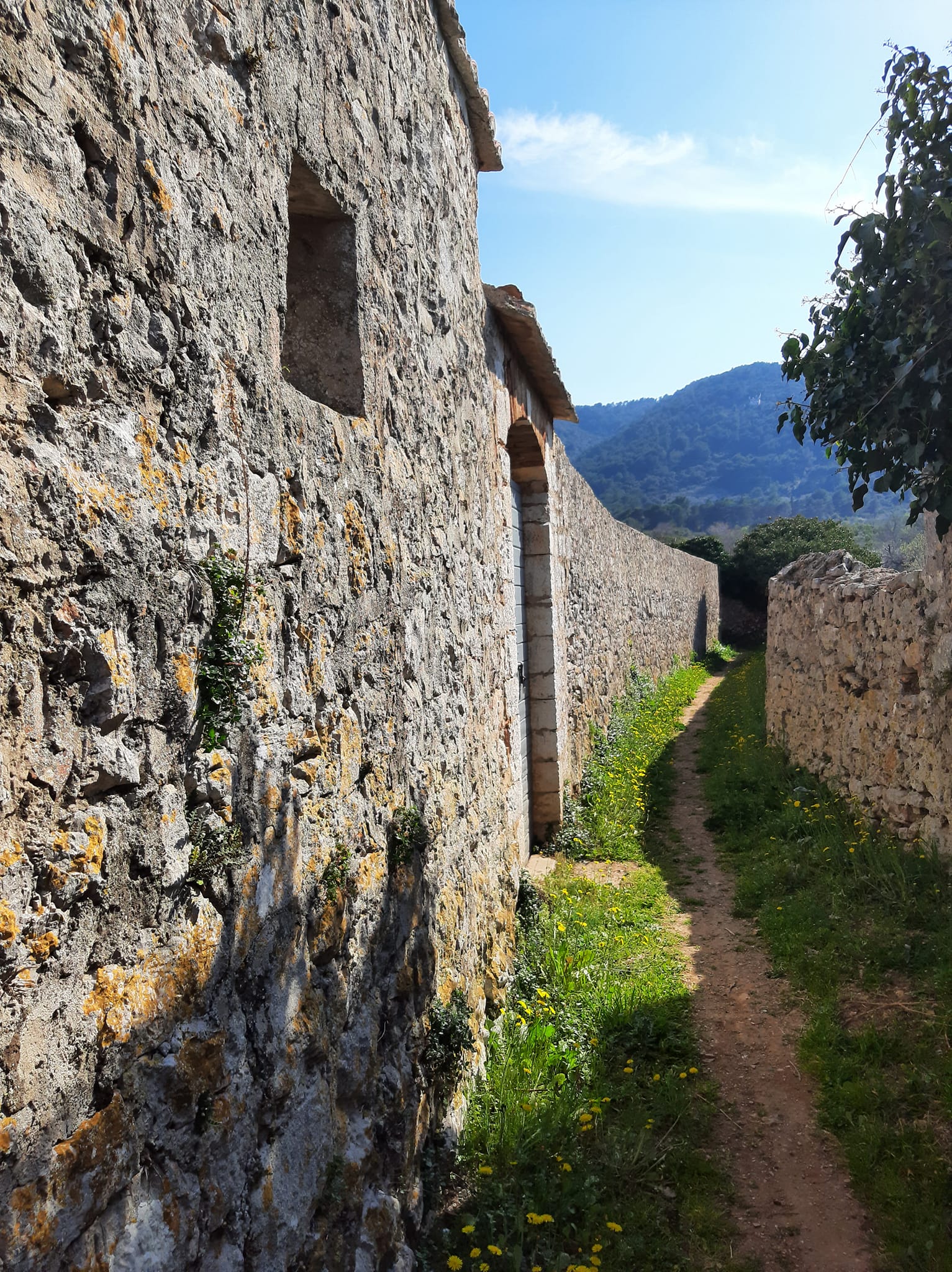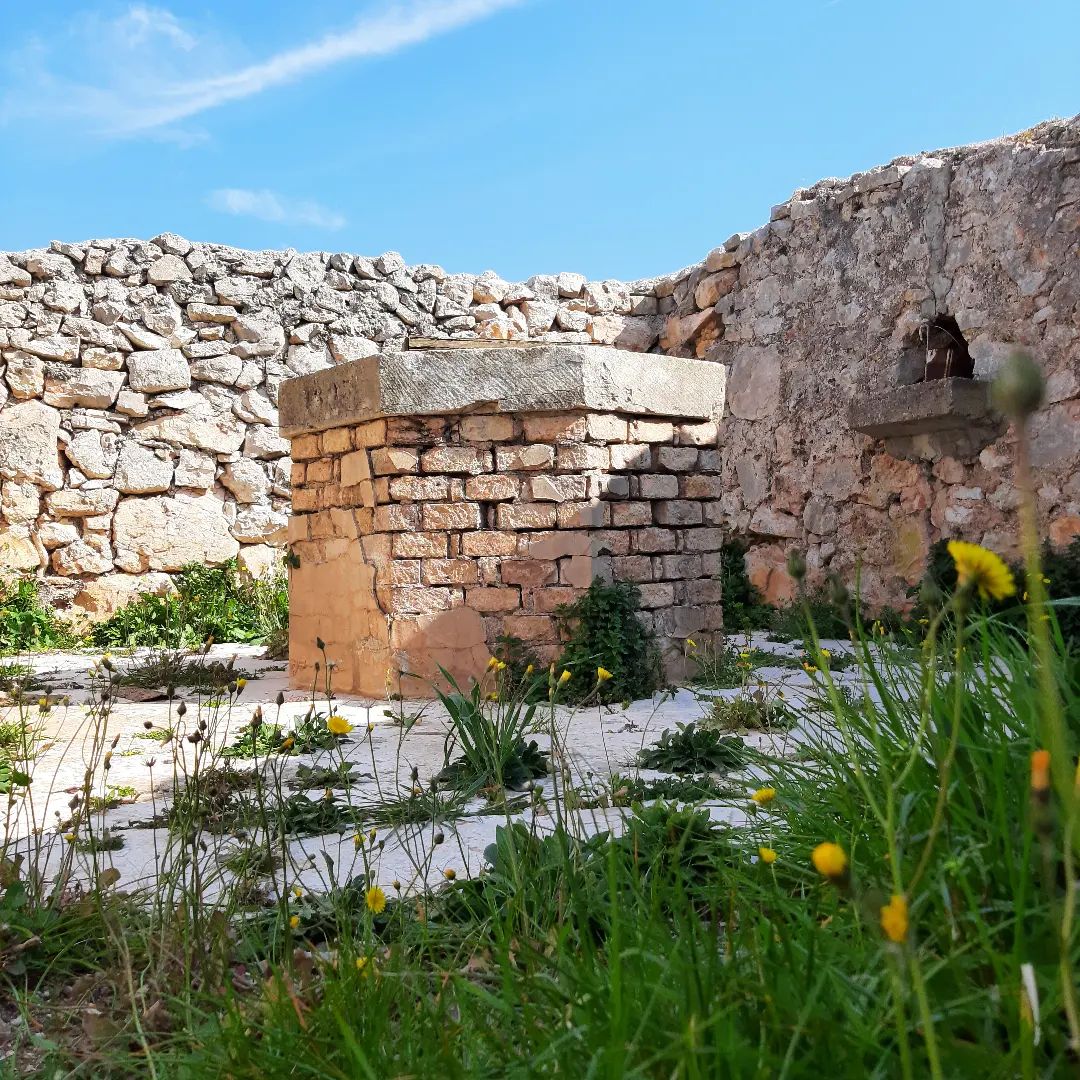PICOKARE, TERTIARY NUNS OF ST. VINCENT
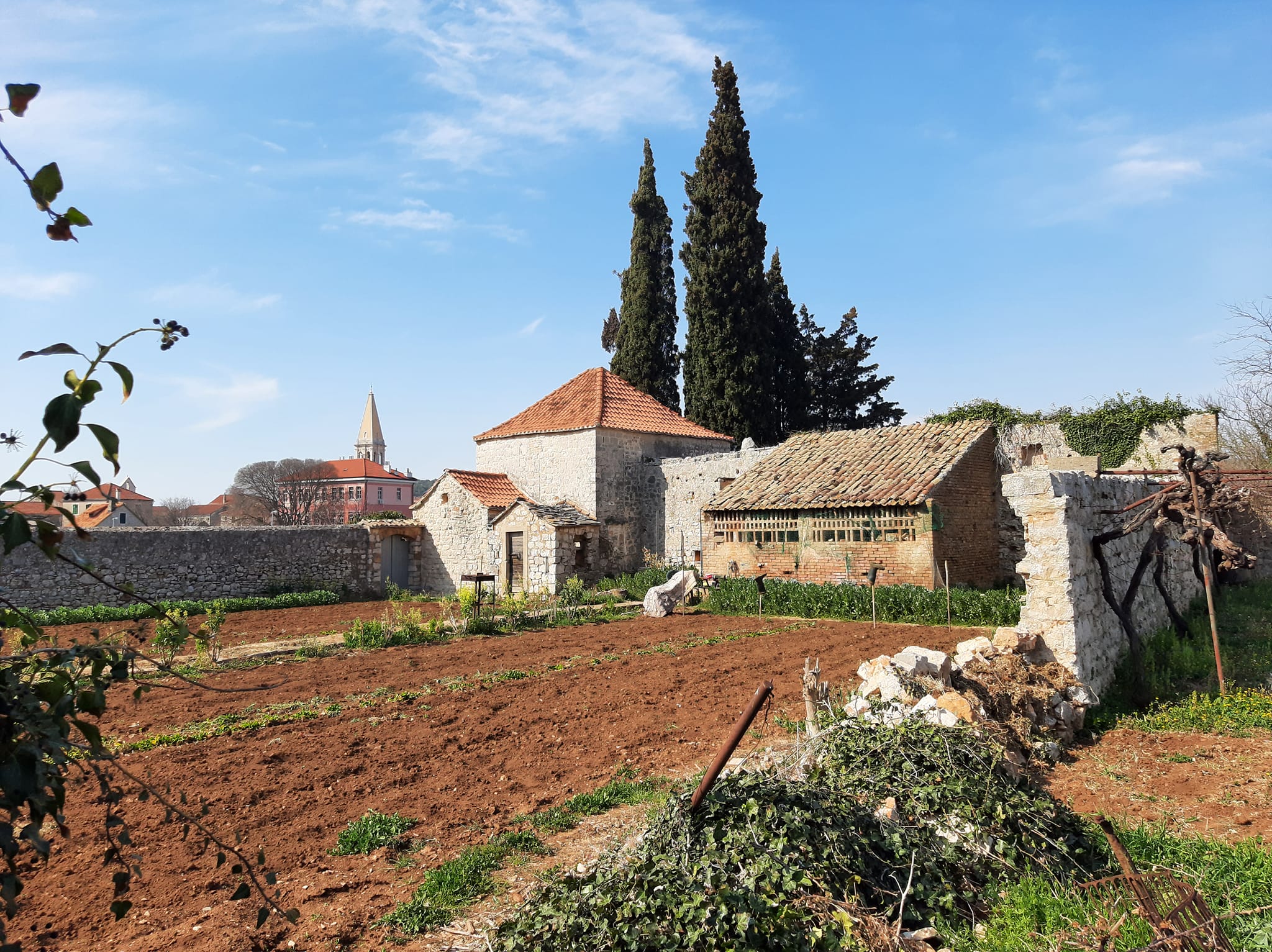
At the eastern entrance to Stari Grad, there was once a church of St. Vincent which housed the order of tertiary nuns – picokare. Don Nikola Barbeta built the church around 1500 AD. Picokare were devotees who dedicated their lives to God, prayer and helping the poor, the neglected and the sick. Until the foundation of the Benedictine nunnery in the town of Hvar, picokare didn`t belong to any order. Apart from the picokare of St. Vincent, at the time there were others in Stari Grad by the church of St. Jerome. That church was built by the same priest, who was affectionately known as Don Mikula Barbetić.
I have always been intrigued by the back side of this cube-shaped church by the road, which I am currently observing from Budinjac during olive cleaning. And up close, it was even more interesting. Along with the visible remains of the former monastery, I was most impressed by the rustic dwelling made of red bricks leaning against the wall. After the last red brick building has recently disappeared from the town, this one is a real sight for sore eyes.
Ill fate came upon picokare from this church. On a hot August day in 1571, the sky, land and sea of the island of Hvar were set on fire during the invasion of the Ottoman army. A lot of damage was done, but worst of all, many lives were lost. Five picokare from St. Vincent died as martyrs. Their bodies were found lifelessly scattered in the garden, where only the day before they filled the chickens` water troughs with water from the well and watered their greens and flowers. The event that shook this small but devout community to its core has been immortalised on a stone relief in the Dominican Museum.
However, according to an oral tradition, picokare were not killed, but they jumped into the well while running away from the enemy and drowned there. This oral tradition perhaps serves only to downplay the cruelty of this unfortunate event. But I found it intriguing enough to look for said well. I found it enclosed in a wall outside the garden plot. For a long time, it had been hidden from the public eye, keeping its secret covered in a green cloak of ivy. And then it revealed itself in all its glory, with its octagonal crown and the carved year of restoration to complement this story.
In fact, two picokare miraculously escaped the ill fate because they were absent at the time of the attack. Lucija was one of them. Even before the event, she nursed the sick and old man Hektorović. Mr. Petar knew Lucija well. She was the daughter of his builder Stjepan Ključeta. After the unfortunate event, Mr. Petar offered her refuge in Tvrdalj, where she lived for the rest of her life in the tower, above the chicken coop, and below the pigeons and sparrows.
Coincidence or not, after the restoration in 1873, the easternmost church of Stari Grad and the only one facing north is now called the church of St. Lucija. Prominent cypresses stand in front of it as its eternal guardians, while the ‘imago pietatis’ situated among them watches over us, the travellers on the path of life, with its pious gaze. During the year, the church opens its doors only during the celebration of the namesake saint. At that time, this sleeping church comes to life again, just like the fiery flames on the eve of the celebration. There must always be plenty of wood for the bonfire, and the flame large enough that even the rain cannot dampen it. Everything is fine as long as there are enough “worshippers of St. Lucija”, hardworking people who take care of the church and keep alive the tradition of light, which dispels all kinds of darkness. The same light that guided the pious picokare nuns and the light we all strive for.
In life, real things are invisible to the eye. And it’s not as if they don’t exist or aren’t important. We only see what meets the eye, hear only what suits us and never go beyond that. Sometimes, we must look at the bigger picture, the one in technicolour. Of course, only if we`re curious enough. However, it takes some effort to get there. We must turn over a couple of stones, look inside the overgrown bushes, step on a few thorns, if necessary, observe from all angles, read, inquire and never give up.


